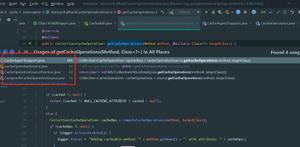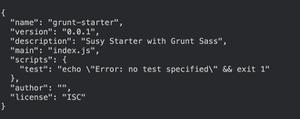春天 - JPA - Hibernate的如何使用EntityManager的
我尝试使用以下技术堆栈来构建REST应用:春天 - JPA - Hibernate的如何使用EntityManager的
- 春
- VueJs
- JPA(休眠)
这是我第一次编写Sping应用程序和Web应用程序开发的经验。
我有4代表在我的数据库:
- 语言
- 句子
- 规则
- 用户
例如,在规则有:
Rule create(EntityManagerFactory factory, String type, String hint, String help, Language language); List<Rule> readAll(EntityManagerFactory factory);
Rule readID(EntityManagerFactory factory, int id);
void update(EntityManagerFactory factory, String type, String hint, String help, Language language);
所以有我的问题:
- 当我创建的每个表控制器,我用的CRUD方法来修改(或没有)我的数据库,我返回一个观点我
HTML和VueJS一部分。但我的方法需要一个EntityManagerFactory,我应该在每个控制器类中创建一个字段,或者这不是我应该怎么做? - 我需要创建一个bean文件并配置它,或者
persistence.xml和pom.xml够了吗?
感谢
回答:
好像你的第一个问题可以分解成多个问题。
当我为每个表创建控制器时,我使用CRUD方法来修改(或不)我的数据库,并且为HTML和VueJS部分返回一个视图。但我的方法需要一个EntityManagerFactory,我应该在每个控制器类中创建一个字段,或者这不是我应该怎么做?
由于您已经接受了建议使用spring-data-jpa的答案。您将处理实体和存储库。
实体是将与您的数据库交互的JPA托管bean。
@Entity @Table(name = "rule")
public class Rule {
@Id
@GeneratedValue(strategy=GenerationType.AUTO)
long id;
String type;
...
@OneToOne
@JoinColumn(...)
Language language;
}
存储库将提供对数据库执行操作所需的所有必要操作。使用JPA,您可以创建一个扩展CrudRepository的接口,它将为您提供一些免费的CRUD操作。 findOne(/* id */),delete(),save()
@Repository public interface RuleRepository extends CrudRepository<Rule, Long> {
// You can easily specify custom finders
public List<Rule> findByType(String type);
}
但我的方法需要一个EntityManagerFactory的,我应该在每个控制器类中创建一个字段或这不是我应该怎么办?
它通常被抱怨有一个请求/响应对象是JPA实体。请参阅链接的答案should i use jpa entity in rest request and/or response
您可以采取多种方法来接收控制器请求并将响应发送到客户端项目。
@Controller public class RuleController {
@Autowired
private RuleRepository ruleRepository;
// Approach 1: Use Request Parameters - enforce inputs
@PostMapping("/rule/:id")
public Rule postWithRequestParams(@PathParam("id") Long id,
@RequestParam("type") String type,
@RequestParam("hint") String hint,
@RequestParam("languageField1") String languageField1) {
Rule inputRule = new Rule(id, type, hint, new Language(languageField1));
Rule responseRule = ruleRepository.save(inputRule);
return responseRule; // I would imagine you would want to set up a model for the response itself
}
// Approach 2: Use RequestBody - serialize Rule from the request
@PostMapping("/rule/:id")
public Rule postWithRequestParams(@PathParam("id") Long id, @RequestBody Rule inputRule) {
Rule responseRule = ruleRepository.save(inputRule);
return responseRule;
}
我需要创建一个bean文件,并配置它或persistence.xml中和pom.xml的是够不够?
如果已经添加spring-boot-starter-data-jpa作为依赖,很多bean配置中已经为你做。
在你main/src/resources(你应该有一个application.properties或application.yml)
spring.datasource.url= # JDBC url of the database. spring.datasource.username= # Login user of the database.
spring.datasource.password= # Login password of the database.
春天做了很多的魔术和繁重的你。
回答:
你一定要对Spring Boot(http://start.spring.io)一看,使得更容易启动Web应用程序的开发。至于持久层,您可以使用Spring Data JPA(已包含Hibernate)模块,该模块也可以轻松与Spring Boot集成。春天数据的美丽已经写在默认情况下大多数查询如save(), remove(), find()等等。你只需要定义将被Spring Data使用的对象。
更新:如果您使用的春天启动,那么你就不需要实体管理器中看到我的春节,引导REST API例如here
回答:
。你所要做的就是在你的属性文件中定义数据源。而在我们的配置类中创建一个Bean就像:
@Bean @Primary
@ConfigurationProperties(prefix = "spring.datasource")
public DataSource datasource() {
return DataSourceBuilder.create().build();
}
现在的你可以用repositories.They处理剩下的事情会像:
import org.springframework.data.repository.CrudRepository; public interface RuleRepository extends CrudRepository<Rule, Long> {
}
在你的控制器,你会用它喜欢:
@Autowired private RuleRepository ruleRepository;
@Get
@Path("/getRule/:id")
public Rule find(@PathParam("id")Long id){
return ruleRepository.findOne(id);
}
这些依赖关系我在我的gradle项目中使用。你会发现相同的Maven版本:
compile('org.springframework.boot:spring-boot-starter-data-jpa') compile group: 'mysql', name: 'mysql-connector-java'
以上是 春天 - JPA - Hibernate的如何使用EntityManager的 的全部内容, 来源链接: utcz.com/qa/266053.html









